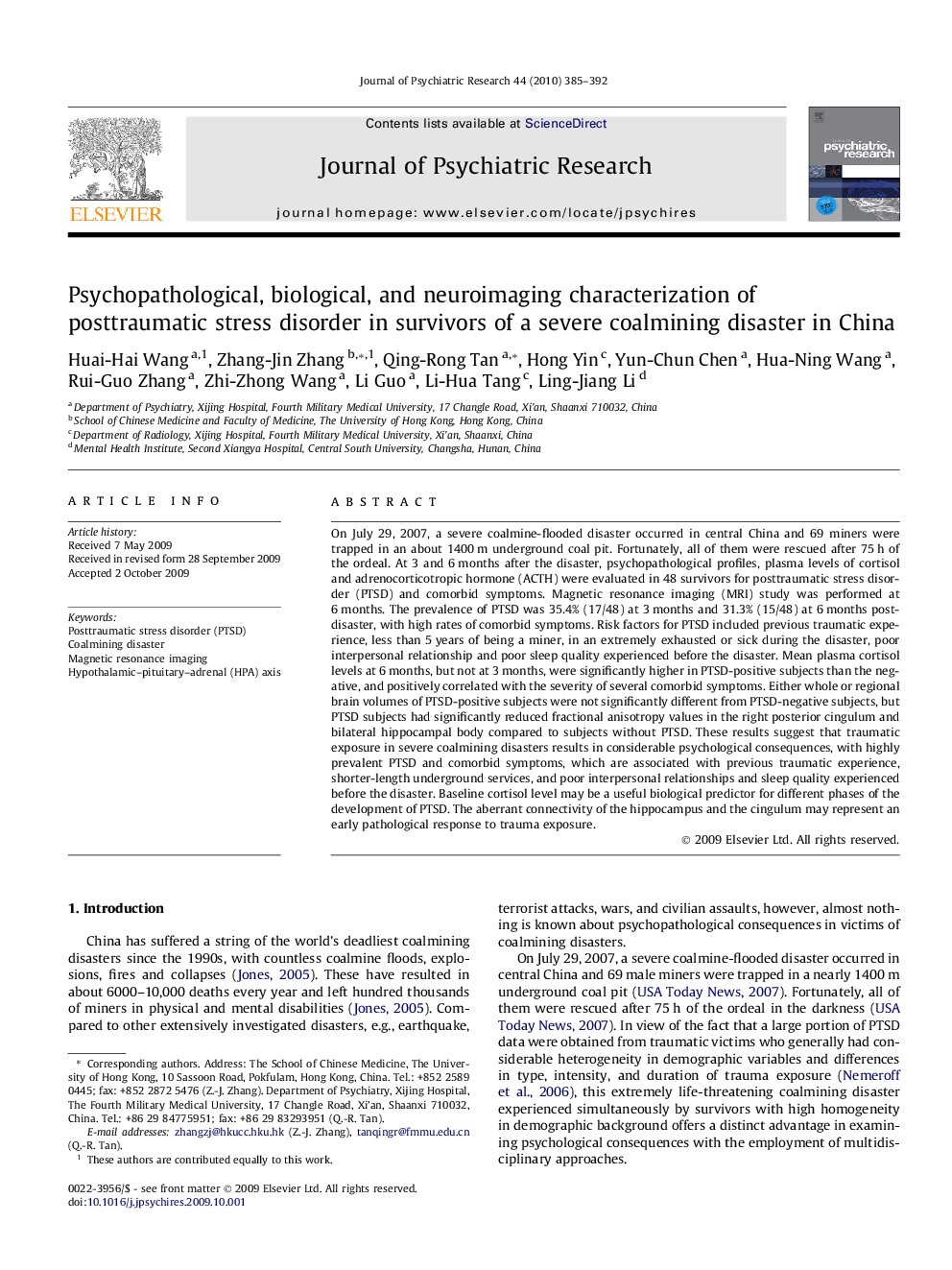| کد مقاله | کد نشریه | سال انتشار | مقاله انگلیسی | نسخه تمام متن |
|---|---|---|---|---|
| 327792 | 542985 | 2010 | 8 صفحه PDF | دانلود رایگان |

On July 29, 2007, a severe coalmine-flooded disaster occurred in central China and 69 miners were trapped in an about 1400 m underground coal pit. Fortunately, all of them were rescued after 75 h of the ordeal. At 3 and 6 months after the disaster, psychopathological profiles, plasma levels of cortisol and adrenocorticotropic hormone (ACTH) were evaluated in 48 survivors for posttraumatic stress disorder (PTSD) and comorbid symptoms. Magnetic resonance imaging (MRI) study was performed at 6 months. The prevalence of PTSD was 35.4% (17/48) at 3 months and 31.3% (15/48) at 6 months post-disaster, with high rates of comorbid symptoms. Risk factors for PTSD included previous traumatic experience, less than 5 years of being a miner, in an extremely exhausted or sick during the disaster, poor interpersonal relationship and poor sleep quality experienced before the disaster. Mean plasma cortisol levels at 6 months, but not at 3 months, were significantly higher in PTSD-positive subjects than the negative, and positively correlated with the severity of several comorbid symptoms. Either whole or regional brain volumes of PTSD-positive subjects were not significantly different from PTSD-negative subjects, but PTSD subjects had significantly reduced fractional anisotropy values in the right posterior cingulum and bilateral hippocampal body compared to subjects without PTSD. These results suggest that traumatic exposure in severe coalmining disasters results in considerable psychological consequences, with highly prevalent PTSD and comorbid symptoms, which are associated with previous traumatic experience, shorter-length underground services, and poor interpersonal relationships and sleep quality experienced before the disaster. Baseline cortisol level may be a useful biological predictor for different phases of the development of PTSD. The aberrant connectivity of the hippocampus and the cingulum may represent an early pathological response to trauma exposure.
Journal: Journal of Psychiatric Research - Volume 44, Issue 6, April 2010, Pages 385–392